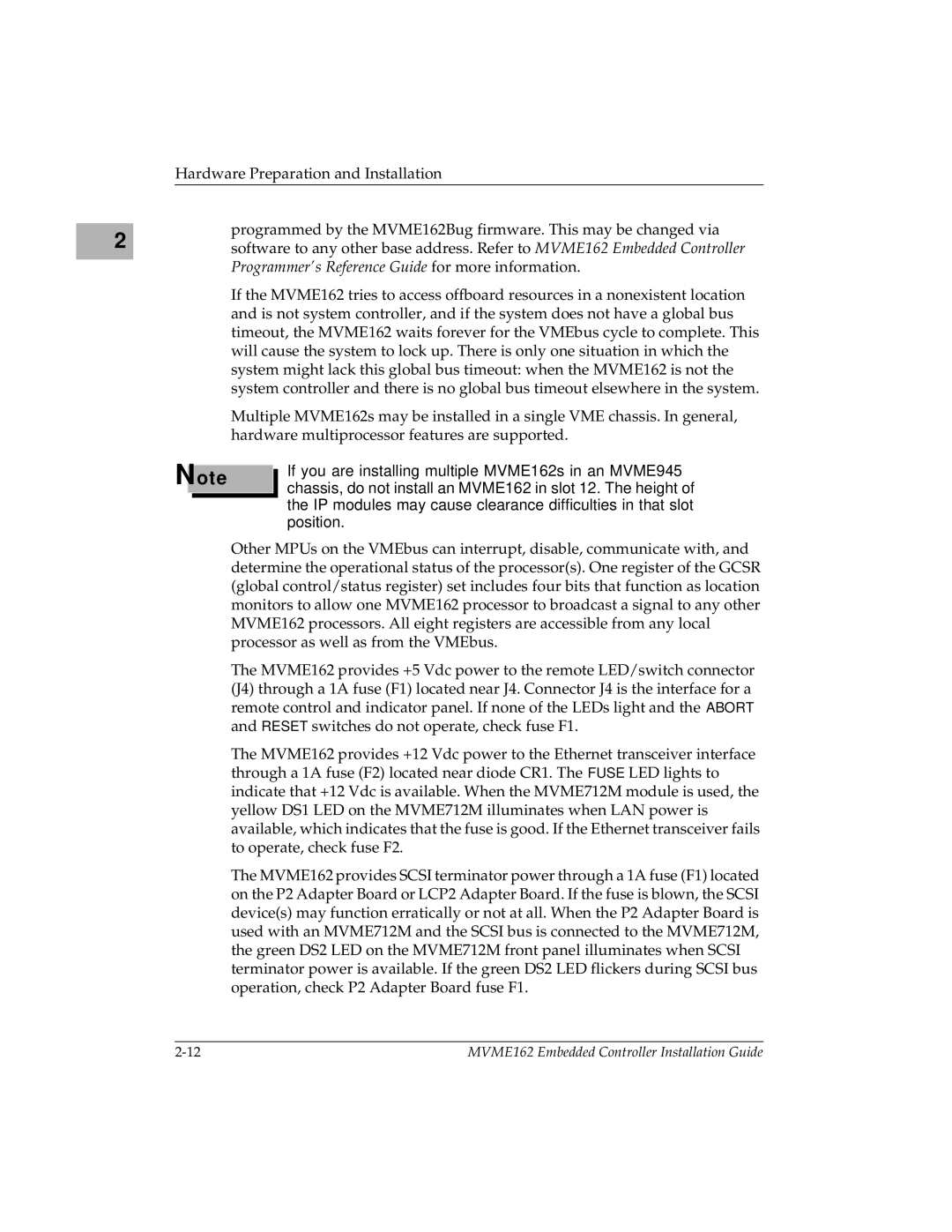
Hardware Preparation and Installation
programmed by the MVME162Bug firmware. This may be changed via
2software to any other base address. Refer to MVME162 Embedded Controller Programmer’s Reference Guide for more information.
If the MVME162 tries to access offboard resources in a nonexistent location and is not system controller, and if the system does not have a global bus timeout, the MVME162 waits forever for the VMEbus cycle to complete. This will cause the system to lock up. There is only one situation in which the system might lack this global bus timeout: when the MVME162 is not the system controller and there is no global bus timeout elsewhere in the system.
Multiple MVME162s may be installed in a single VME chassis. In general, hardware multiprocessor features are supported.
Note
If you are installing multiple MVME162s in an MVME945 chassis, do not install an MVME162 in slot 12. The height of the IP modules may cause clearance difficulties in that slot position.
Other MPUs on the VMEbus can interrupt, disable, communicate with, and determine the operational status of the processor(s). One register of the GCSR (global control/status register) set includes four bits that function as location monitors to allow one MVME162 processor to broadcast a signal to any other MVME162 processors. All eight registers are accessible from any local processor as well as from the VMEbus.
The MVME162 provides +5 Vdc power to the remote LED/switch connector (J4) through a 1A fuse (F1) located near J4. Connector J4 is the interface for a remote control and indicator panel. If none of the LEDs light and the ABORT and RESET switches do not operate, check fuse F1.
The MVME162 provides +12 Vdc power to the Ethernet transceiver interface through a 1A fuse (F2) located near diode CR1. The FUSE LED lights to indicate that +12 Vdc is available. When the MVME712M module is used, the yellow DS1 LED on the MVME712M illuminates when LAN power is available, which indicates that the fuse is good. If the Ethernet transceiver fails to operate, check fuse F2.
The MVME162 provides SCSI terminator power through a 1A fuse (F1) located on the P2 Adapter Board or LCP2 Adapter Board. If the fuse is blown, the SCSI device(s) may function erratically or not at all. When the P2 Adapter Board is used with an MVME712M and the SCSI bus is connected to the MVME712M, the green DS2 LED on the MVME712M front panel illuminates when SCSI terminator power is available. If the green DS2 LED flickers during SCSI bus operation, check P2 Adapter Board fuse F1.
MVME162 Embedded Controller Installation Guide |
